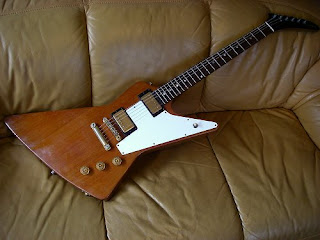
In 1973 a group of dedicated and passionate musicians submerged themselves in a Chicago basement to build modern guitars with a vibrant, vintage soul. This troupe, led by Jol Dantzig, became Hamer Guitars. Together they pioneered the "Modern Vintage" spirit and actually created the boutique guitar category. Today, Hamer Guitars is still a small, tightly-knit group of artisans committed to building instruments with undeniable character and flawless construction.
Each Hamer Guitar is truly hand-built in a manner unparalleled in the guitar industry. True to their roots, Jol and crew continue to define what an American guitar can be. We invite you to view and discover the difference between "good enough" and truly great. Come with us and join the few who dare to play the very best.
-
Hamer Vector Flametop VECF
-
6 String Electric
-
Body Type: Alder w/ Ivoroid Binding
-
Top: Flat Flamed Maple Veneer
-
Tuners: Keystone
-
Electronics: 2-Volumes, 1-Tone, 3-Way Tog
-
Bridge: Tune-O-Matic
-
Inlays: Boomerang
-
Neck Joint: Set
-
Scale Length: 24 3/4"
-
Neck Pickup: Hamer Humbucker
-
Bridge Pickup: Hamer Humbucker
 1950's National Map guitar, original Black finish, original hardshell case, 2 pickups, all original.
1950's National Map guitar, original Black finish, original hardshell case, 2 pickups, all original.





